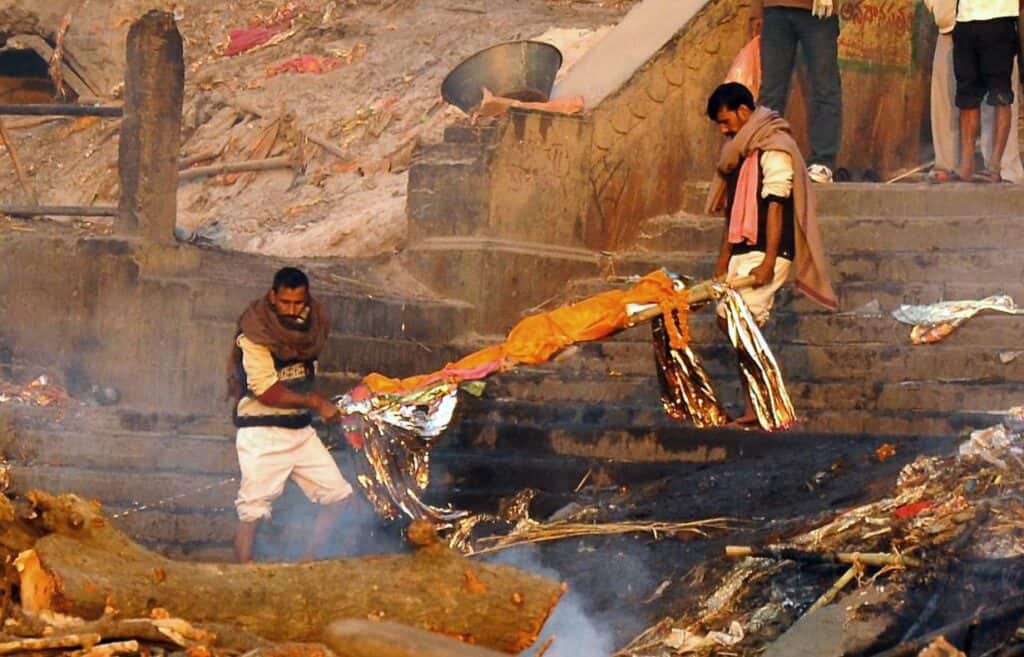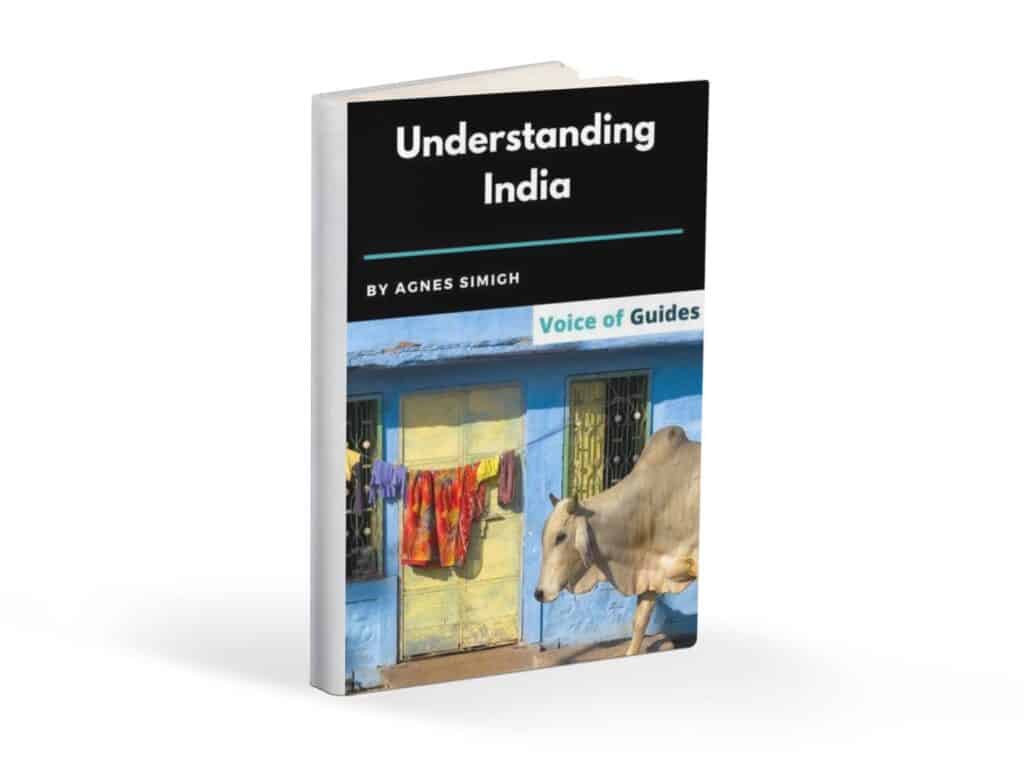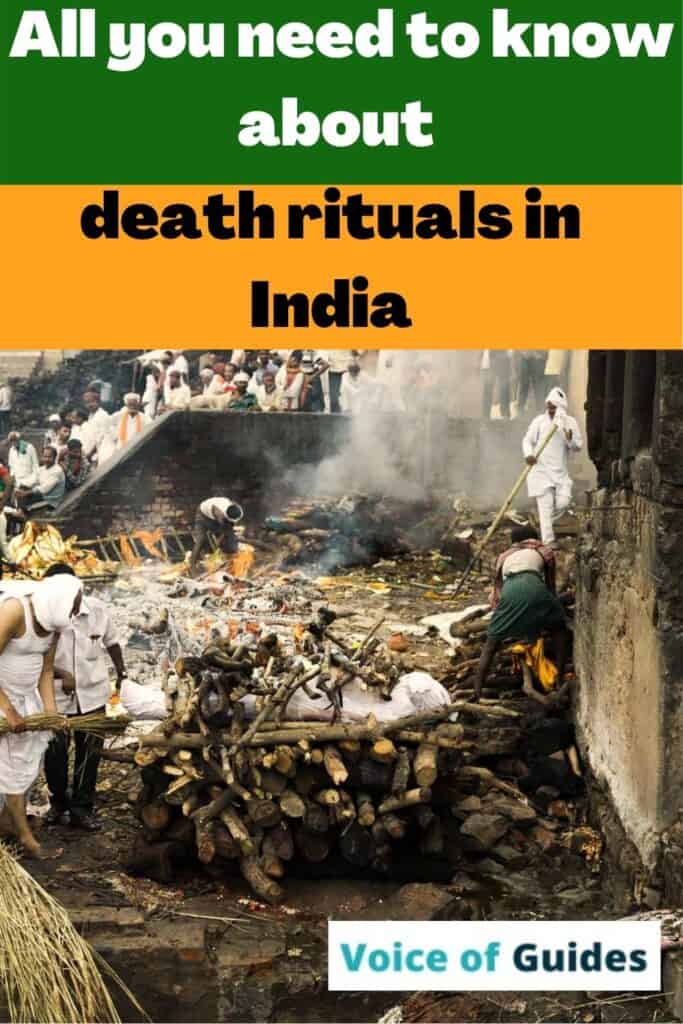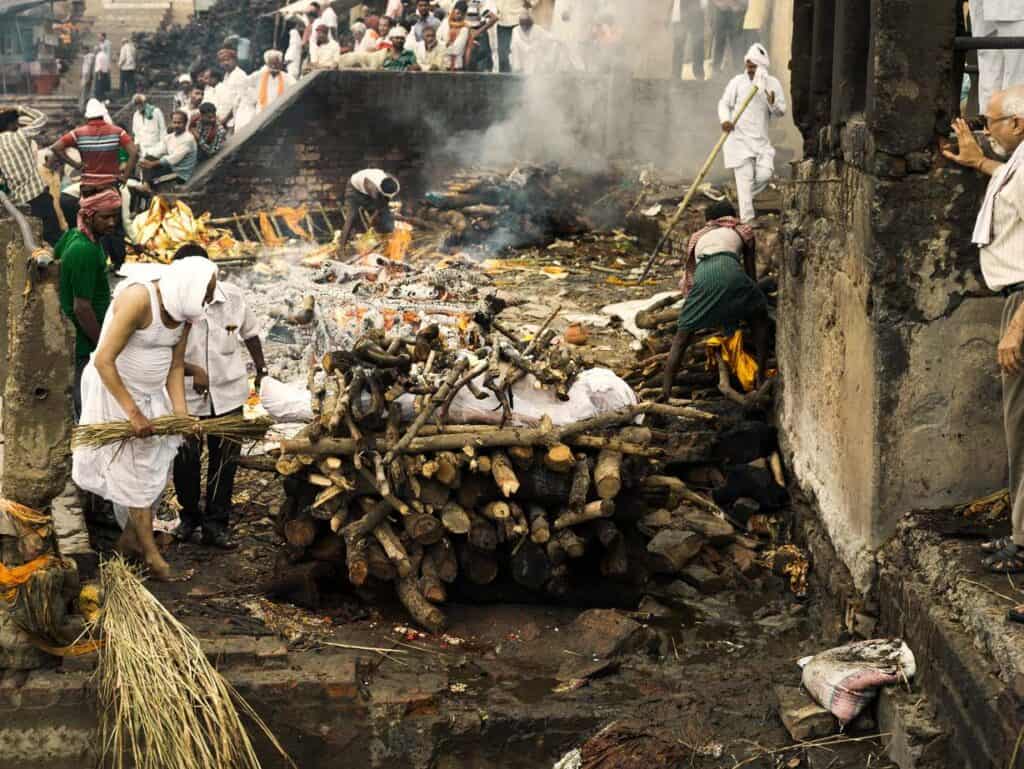Indians have a different perception of death. They prefer to say that the person passed away (“samadhi”) instead of saying that it died. They mourn to a lesser extent because they believe to be reborn into a new life again. In India, Hindus with few exemptions incinerate the bodies. There are several incredible Hindu death rituals. They often cremate the same day but no later than 24 hours. The son of the deceased is to carry out the cremation rites. That is the main reason why having a son is so important for Hindu families.
Why do Indians choose cremation over burial?
- Hindus believe in reincarnation, and cremation is the fastest way to release the soul and help with reincarnation. The soul will be reborn in some other form and passes through the cycle of birth, growth, and death again.
- It is more space-saving than using vast lands for cemeteries.
- Cremation is cheaper than burial.
- It helps the relatives and friends get detached from the deceased because the regular visit to the grave can cause more trauma.
- If the person died of some contagious disease, they believe that cremation prevents it from spreading to other persons or the environment.
- Hindus consider cremation neater and cleaner than burial. It is the symbol of purification.
In what cases do Hindus not bury the bodies?
In some cases, the Hindus also choose not to cremate but bury the body. They do not cremate holy “sadhus” (saints), pregnant women, small children, victims of suicide, murder, or other violence, and people suffering from leprosy.
Holy men & saints are so much detached from their bodies anyway that cremation is not necessary. They are buried in a lotus position.
Hindus do not cremate children because they are pure, innocent, and less attached to the body. Another reason for not cremating children and holy sadhus is that they do not have offspring essential to carry out the final rites.
Hindus do not cremate the bodies if the family cannot afford it. In this case, they bring the bodies to the middle of the Ganges or other holy river and push them into the water with a heavy stone attached to the body so that it never comes back to the surface.
They do the same if this is the will of the dead. Some Hindus refuse to be cremated. They feel their body is more useful as nourishment for crocodiles, turtles, or other animals if thrown into the river.
What happens when somebody dies – death rituals in India
The relatives must prepare the body for cremation. If the person had died at home, and she was a woman, 6-7 female relatives will wash the body with dahi (curd) and Ganges water and put a white dress on if she or he was a widow. But if she was married, they dress her up in her ornate wedding dress. If the person who dies was a man, then the male relatives will wash the body. As the last piece of cloth, the closest female and male relatives place a scarf and garland on the body and decorate the house with garlands and roses.
Another Hindu death ritual is that as long as the body is in the house, the family members do not eat, drink or work.
Four men place the body on a bamboo bed and, if it is nearby, they take the body to the place of cremation on foot. If it is farther away, they ask for transport service. Until now, Indians do not use coffins at all. If the cremation takes place at the holy Ganges, they dip the body into the river before placing it on the pyre.

What are the Hindu cremation rituals?
The eldest son of the father performs puja, a religious musical ritual before the cremation, offering rice dumplings (pinda) to the dead. If the mother dies, then her husband will perform the puja.
According to the Hindu death rituals, the eldest son must ignite the pyre to make sure that the dead soul leaves his body.
If there is no son in the family, one of the male relatives takes over the duty. It is one of the main reasons why life is almost unimaginable in India without a son. The youngest or eldest boy often shaves his head and wears a simple white dress as a sign of respect during the ceremony.
Indian cremation traditions do not allow women to be present during the ceremony, even if the dead only had a daughter. In villages, they still stick to this custom. But city dwellers are more flexible nowadays. Both men and women attend the cremation ceremonies in the cities. Especially if the deceased has only a daughter. She will be present at the ceremony, and some other female relatives too.

They wait until the fire goes out within 7-8 hours. Then, the oldest son breaks the skull at the end of the cremation with a bamboo stick. This helps the soul to get into heaven and to cut all connections with the dead.
After the cremation, family members are considered impure. For that, they wash their faces on the spot and have a shower as soon as they reach home, even without removing their clothes. They must change and wash the clothes that they wore during the cremation.
If somebody died inside the house, the relatives are not allowed to cook at home. They either bring food from a nearby restaurant or cook at the neighbor’s next door. The children will not go to school for four days, and the older relatives will not work either. They close their shops, and they only return to ordinary life on the 5th day.
The 4th day after cremation
Four days after the cremation, relatives return to the cremation place and collect the bones and ashes in separate pots. The family pours the ashes in a holy Indian river or any river nearby. For those living in Delhi, Haridwar is the closest city by the river Ganges, some 200 kilometers from the capital. They keep the bones at the cremation site for ten days.
The 10th – 11th -12th day after cremation
The family collects the bones from the cremation place and takes them to the nearest holy city. A priest performs puja (religious ceremony) and throws the bones in the sacred river. On the 11th and 12th day, the relatives have additional pujas. Then they have to offer donations to provide food for a year and offer a cow for the dead person. Earlier families offered one real cow to the dead, but now they only symbolically choose one and give some thousand Rupees instead. Having completed the ceremonies, the family returns home.
The 13th day after the cremation – the Hindu death ritual of “Shraddh”
Family members organize “Shraddh” for their deceased parents. Relatives and close friends gather for a festive meal and prepare “pindas” (rice dumplings) for the deceased. This food feeds the dead soul and encourages it not to intervene in the life on earth.
The family has to repeat the Shraddh ceremony every year, except if the family goes once to Gaya city in Bihar state to perform the Shraddh there. Once they performed Shraddh rituals in Gaya, they have no more debts towards their ancestors.
Each year there are 15 auspicious days dedicated to the dead, in September, or sometimes in October. The priest defines the period each year. During these days they do not celebrate any weddings.
The 17th day after the cremation
Depending on the family’s budget, on the 17th day, the family has to host a minimum of 11, 21, 31, or 51 priests in their home. They offer clothes to them and invite them for lunch.
Hindu death ritual after one year after the cremation
During one year following the loss of the family member, the close relatives refrain from any celebration.
After one year they organize a big ceremony, the „havan ritual”. This is a fire ritual performed by a Hindu priest. If they want to set up a wedding during this period, they have to bring forward the “havan ritual”. They can only celebrate after it has been completed.
Why do Hindus want to die in the holy city of Shiva, Benares?
Hindus believe if they pass away in the holy city of Siva, Benares, they will be freed from the recurring cycle of rebirth and will directly attain eternal salvation (moksha).
Very religious Hindus wish to die in the holy city. For that reason, the ashes of an estimated 100,000 cremated bodies are thrown into the Ganges in Benares every year.
The people of lower castes, who take care of the body
The lowest society members (scheduled tribes, scheduled castes, and other backward classes ) must make the necessary preparations for the cremation. The contact with the dead body is polluting, so only they can do this work. In addition to the cremation fee, they also receive commissions based on the quantity of wood. In sacred places, it can be a lucrative business. Some make a fortune out of that.
Once they have a monopoly, they can set the price. They often demand an excessive amount of money from the poorest.
If the customer cannot afford to pay the full amount, they use less wood and only cremate parts of the body.
It is unbelievable, but families who cannot buy the necessary amount of wood will release the body half-cremated or not cremated at all into the water. To clean the Ganges from the floating body parts, the government decided to breed special turtles. They consume dead body parts but do not disturb the ritual bathing of religious people. The idea was good, but due to corruption and improper organization, 25 000 turtles released into the water were poached, smuggled, and sold for their meat.
How much does a cremation cost in India?
Usually, 300-400 kg of wood is needed to cremate the dead body. Since wealthy people always used precious sandalwood, it has come to the brink of extinction, and ever-abundant teak and sandalwood have become expensive by now.
The cost of cremation varies according to region. But in general, traditional cremation centers offer their service for a price of INR 6000 – 7000.
Electric cremation centers run by local governing bodies are much cheaper. They offer the same service for like INR 1500- 2000. The electric cremation is also a lot environment-friendlier.
Why do Indians still prefer the traditional cremation to the electric one?
Most Hindus still insist on conventional cremation. According to their belief, the spirit only gets liberated when they break the skull. Since this cannot happen in electric cremation centers, Hindus are reluctant to use them. Thus traditional crematoriums have become a highly profitable business with low investment.
Educated people now prefer cleaner, more efficient electric cremation and save valuable wood at the same time.
Pin it for later!




Pingback: The only guide you need to visit Varanasi in 2 days | Voice of Guides